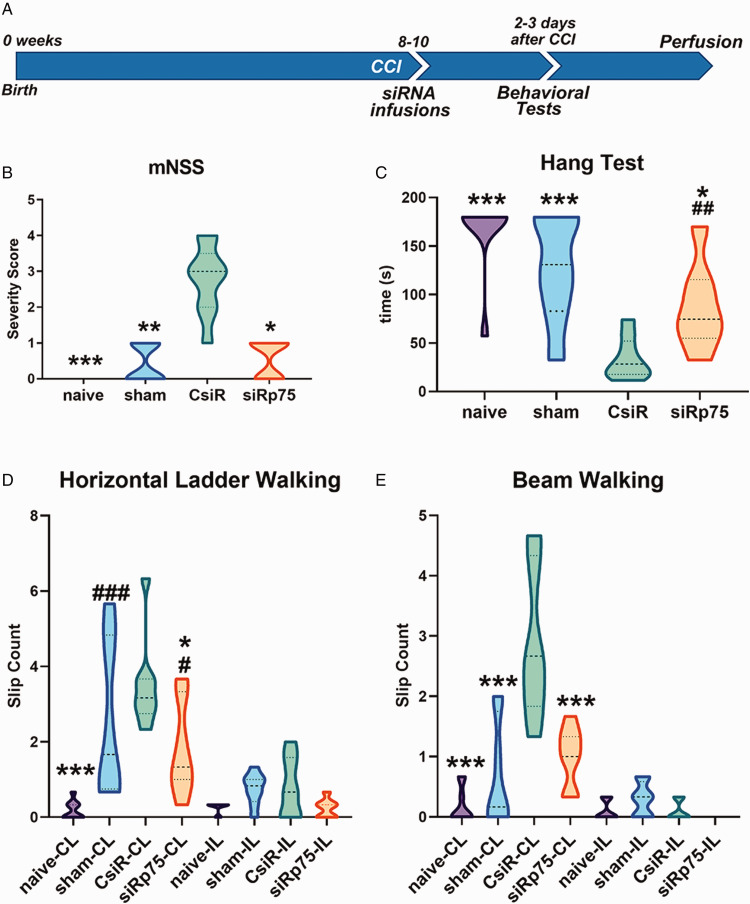Figure 3.
Behavioral Analyses of Mice Receiving Intranasal p75NTR Pen-siRNA or Control Pen-siRNA. (A) Outline of the experimental paradigm of CCI injury and behavioral testing. Control and p75NTR Pen-siRNA were infused intranasally to each nostril every 2 min for a total of 20 µl immediately after CCI. (B) Composite mNSS scores for naive, sham-treated, control Pen-siRNA-treated, or p75NTR Pen-siRNA-treated mice evaluated 2 days following the injury. (C) Hang test measured in time (seconds) 2 days following the injury. (D) Average foot slips per run on horizontal ladder with irregularly placed rugs evaluated 3 days following the injury. (E) Average foot slips per run on 1.0-cm wide balance beam evaluated 3 days following the injury. Data were collected across 7 to 9 animals per group; *p < .05, **p < .001, ***p < .0001 for groups compared with control Pen-siRNA-treated mice; #p < .05, ##p < .001, ###p < .0001 for groups compared with naive mice using analysis of variance followed by Tukey’s multiple comparisons test for parametric values and Kruskal–Wallis test followed by Dunn’s multiple comparison test for nonparametric values.
CCI = controlled cortical impact; CsiR = control siRNA; siRp75 = p75NTR siRNA; CL= contralateral; IP = ipsilateral to the injury.

